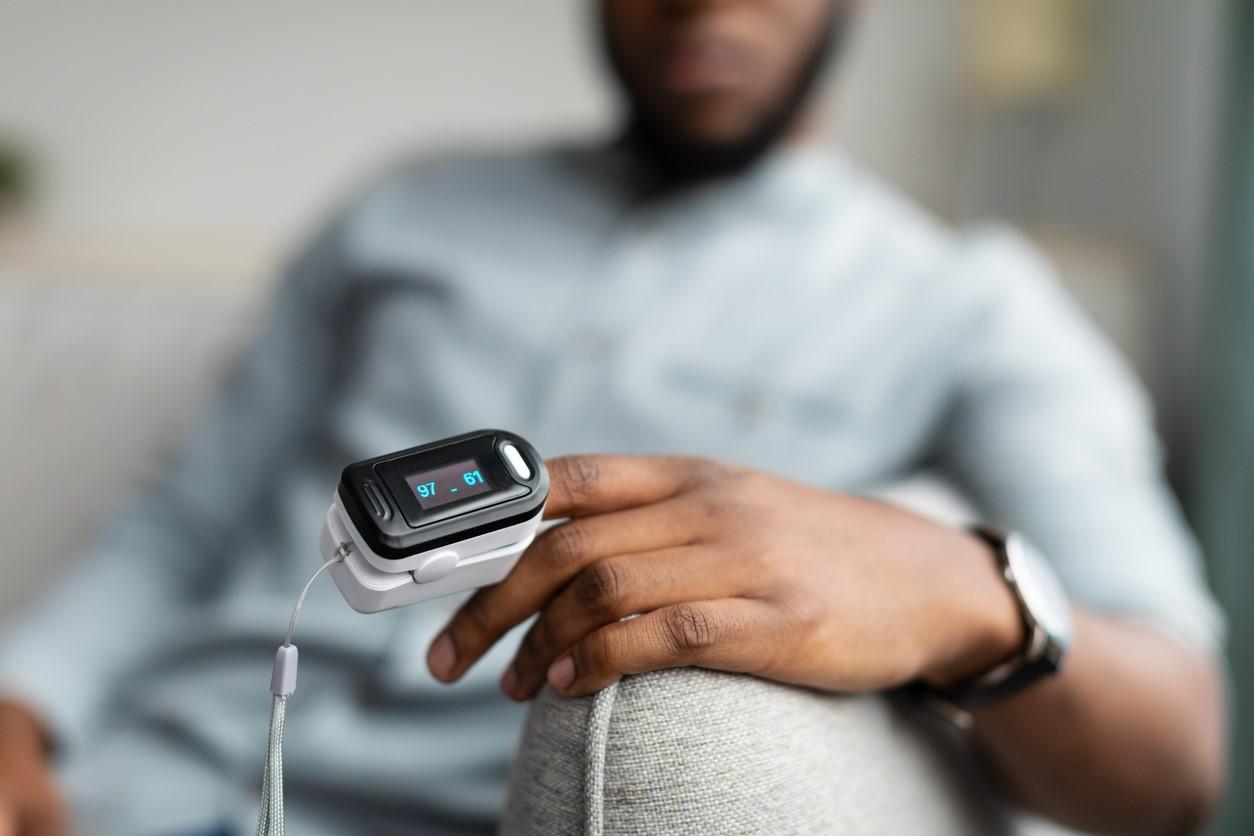A retrospective study yesterday in JAMA Internal Medicine shows that pulse oximetry overestimated arterial oxygen saturation in racial and ethnic minority COVID-19 patients, leading clinicians to believe they weren't ill enough to be eligible for appropriate treatments.
A team led by Johns Hopkins University researchers conducted two analyses using data from five referral centers and community hospitals. They analyzed the oxygen saturation of 1,216 COVID-19 patients monitored by pulse oximetry and arterial blood gas measurement and also assessed 6,673 patients with both pulse oximetry and covariate data.
Overestimation in 30% of racial minorities
Of the 1,216 patients, 41.7% were women, 39.3% were Black, 37.8% were White, 17.7% were Hispanic, and 5.2% were Asian. Occult low oxygen saturation was identified in 30.2% of Asian, 29.8% of Hispanic, and 28.5% of Black patients, compared with 17.2% of their White peers.
Pulse oximetry overestimated oxygen saturation by, on average, 1.7% (95% confidence interval [CI], 0.5% to 3.0%) in Asian, 1.2% (95% CI, 0.6% to 1.9%) in Black, and 1.1% (95% CI, 0.3% to 1.9%) in Hispanic patients.
Of the 1,903 patients with predicted oxygen saturation levels of 94% or less before a pulse oximetry measurement of 94% or less or the initiation of supplemental oxygen, Black patients had 29% lower odds (hazard ratio [HR], 0.71; 95% CI, 0.63 to 0.80), and Hispanic patients had 23% lower odds (HR, 0.77; 95% CI, 0.66 to 0.89) of recognition of treatment eligibility relative to their White counterparts.
Overall, 23.7% of these patients—54.8% of whom were Black—never received the therapy for which they were eligible. Of the remaining 1,452 (76.3%) whose treatment eligibility was eventually recognized, Black patients' median delay before treatment initiation was 1.0 hour (95% CI, 0.23 to 1.9) longer than that of White patients. Hispanic and Asian patients didn't have a longer delay than White patients.
'The decision to do nothing about a faulty device' needs fixing
The researchers warned that these disparities in treatment provision and initiation may lead to worse outcomes for Black and Hispanic COVID-19 patients.
"The results of this cohort study suggest that racial and ethnic biases in pulse oximetry accuracy were associated with greater occult hypoxemia in Asian, Black, and non-Black Hispanic patients with COVID-19, which was associated with significantly delayed or unrecognized eligibility for COVID-19 therapies among Black and Hispanic patients," they wrote.
In a related commentary, Valeria Valbuena, MD, of the University of Michigan; Raina Merchant, MD, MSHP, of the University of Pennsylvania; and Catherine Hough, MD, of Oregon Health Sciences University, questioned the reliance on pulse oximetry for initiation of COVID-19 therapy.
"Although differences in pulse oximetry may seem to be most meaningful near treatment thresholds, certain patient populations (ie, Black patients undergoing extracorporeal membrane oxygenation for acute respiratory distress syndrome) have high rates of occult hypoxemia, indicating a need for greater awareness when treating these groups," they wrote. "Moreover, with children, even mild occult hypoxemia can have substantial long-term effects. Why tolerate a device that consistently works less well in patients with darker skin tones?"
They added that the link between underrecognition of occult low oxygen saturation and treatment delays can't be parsed from the larger societal injustices and disparities behind the poor COVID-19 outcomes of racial and ethnic minority groups.
"These larger and systemic issues exist outside of device design issues demonstrated by these investigations," they wrote. "Although the device measurement error is real and based purely on optics, the decision to do nothing about a faulty device is a human one, and one that can and should be corrected."




















